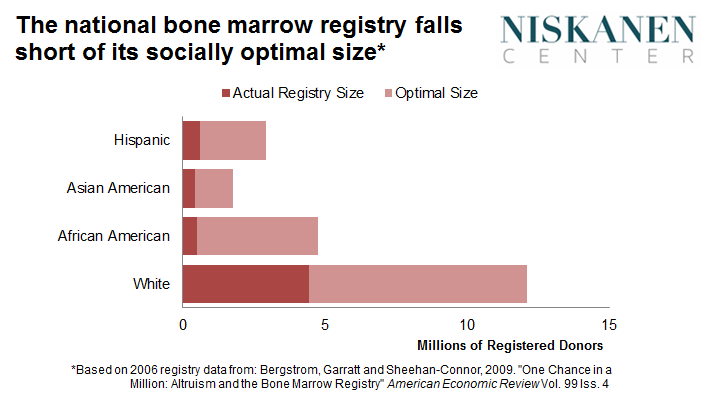December 18 has come and gone, and with it the Health Resources and Services Administration (HRSA) has missed its Congress-imposed deadline for clarifying whether hematopoietic (blood-forming) stem cells (HSCs) are or are not an organ—no different than the bone marrow from which they originate, even when they are extracted non-invasively from the bloodstream.
This marks over 3 years of delay and indecision since HRSA first proposed to redefine HSCs as an organ “regardless of whether they were recovered directly from bone marrow (by aspiration) or from peripheral blood (by apheresis)” in 2013. The rulemaking would supercede the ruling of the Ninth Circuit’s decision in Flynn v. Holder which determined stem cells taken from the peripheral blood constitute a “subpart” of the blood, and are therefore a substance for which donors can be remunerated. As an organ, compensation for HSCs would become a felony punishable by a five year prison sentence.
The ruling in Flynn v. Holder was a win for individual liberty, as well as common sense. As I detailed in my paper, Bone Marrow Mismatch, the current bone marrow registry suffers from a substantial 65% gap between demand and supply. This prevents over 10,000 patients suffering from blood diseases like leukemia and anemia from finding a matching transplant donor each year, resulting in several hundred or several thousand avoidable deaths (depending on the estimate). The gap is particularly severe for minority groups and people of mixed race, for whom finding a donor match is inherently more difficult—both due to genetic factors and the much lower follow-through rates of minorities contacted on donor registry.

Allowing compensation for donors would help to close the overall gap, raise follow-through rates, and allow clinics to experiment with compensatory models for attracting underrepresented and high-value donor groups. Thirty-nine prominent ethicists have even signed a letter endorsing the idea. Yet with HRSA keeping the legal status of compensating HSC donors in limbo, clinics have been unable to begin this important work, and lives hang in the balance.
That’s why Congress, in the 2015 reauthorization of the Stem Cell Therapeutic and Research Act of 2005, included a section directing the Secretary of Health and Human Services to issue “determinations with respect to the inclusion of peripheral blood stem cells and umbilical cord blood in the definition of human organ” … “not later than one year after the date of enactment of this Act.”
That deadline was Sunday, December 18, 2016. And just like that, HRSA’s proposed rule has gone from merely violating common sense and Congressional intent (extracting HSCs from blood was not a common practice when Congress outlawed the sale of bone marrow and other organs in 1984) to flagrantly ignoring public law. Of course, the rule could be hung up at OMB or delayed for other administrative reasons, but at this point HSRA has no excuse. They are three years in, and one of the simplest forms of rules an agency can enact—a clarification to a definition—remains unresolved.
UPDATE:
A representative from HRSA responded to my request for an update on the status of the final rule. Here is what he wrote:
What I can tell you is that HRSA will continue to review the issue though we did not meet the deadline of December 18, 2016. That’s all the information we have at this point in time.